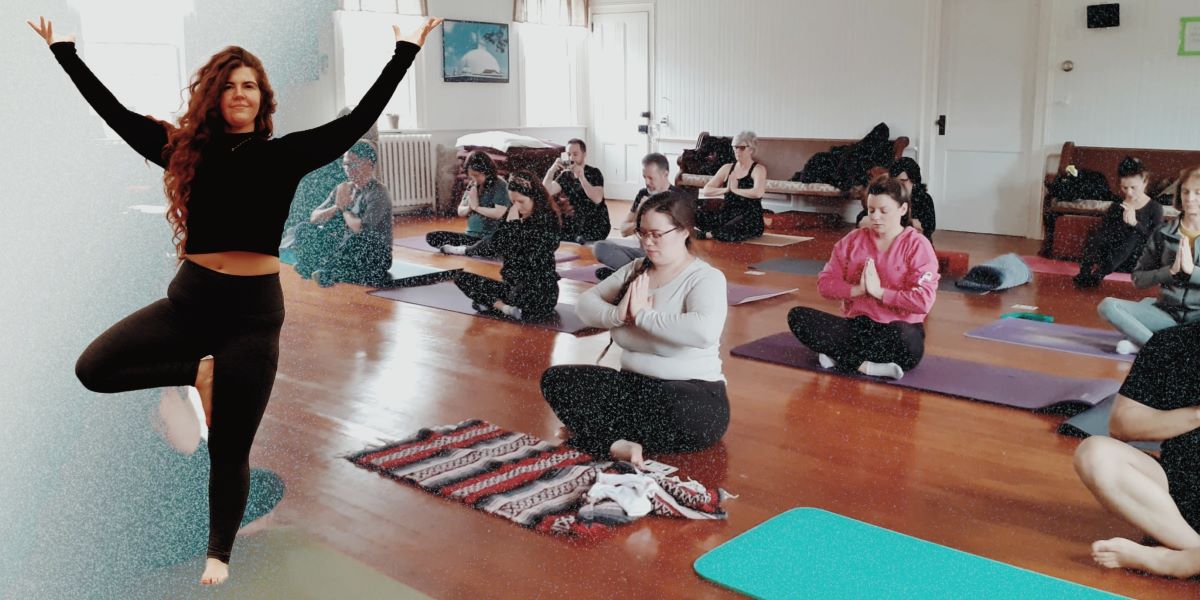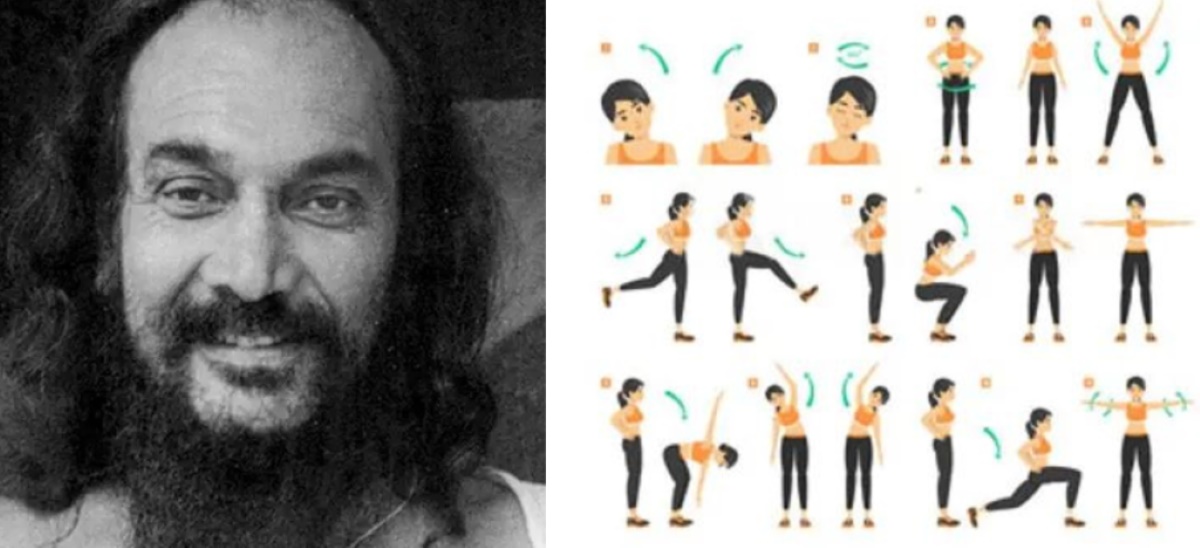International Yoga Day Special: How yoga is evolving to suit stressful and sedentary times
Yoga has been evolving, more recently in Covid’s wake. As lifestyles become more sedentary and stressors more relentless, the standard set of yoga postures won’t do anymore. So you come across varieties like hot yoga, vinyasa, sukshma vyayam, chair yoga and yoga nidra.
 Post-Covid, yoga teacher Juliana Di Leonardo pays more attention to breath work, mindfulness, and shavasana in her classes. / Courtesy Photo
Post-Covid, yoga teacher Juliana Di Leonardo pays more attention to breath work, mindfulness, and shavasana in her classes. / Courtesy Photo
Did Covid-19 change yoga? Of course. Most visibly, many yoga studios shuttered, and classes went online. But in the aftermath of the worst pandemic in a century, the content of a yoga class is also changing, hastening the trend of recent decades to adapt to the more stressful times we live in.
Covid, points out Juliana Di Leonardo, a yoga teacher based on Long Island, made people fearful and anxious. “In my classes, I pay attention to warm up and breath work, regularly discussing tips and tricks with students that they can add to their ‘yoga toolbox’ to help them traverse turbulent situations with more ease, clarity, and intuition,” she told Lotus, a wellness and spirituality web magazine.
One of those tools is mindfulness during yoga to help calm the mind. When warranted, Juliana also prolongs the shavasana (corpse pose) that usually closes a yoga class.
Yoga Nidra: a surefire way to deep relaxation
Many yoga teachers turn shavasana into a condensed version of yoga nidra (yogic sleep) for deeper relaxation. Developed at the Bihar School of Yoga in India, this half-hour practice in a supine position includes rotating your awareness through the body and certain visualizations. Some gurus now teach their own versions of yoga nidra, which is growing in popularity as a surefire way to relax the body and mind.
Juliana also adapts to suit the fitness level of her class. “At senior centers, it will be chair yoga, for example,” she says. She may choose easier poses for a pop-up class at a popular venue, as many of those showing up may be novices.
.jpg) Shyam Yogi, based in Mumbai, India, supplements his income by teaching yoga on Zoom to students in the US and UK. / Courtesy Photo
Shyam Yogi, based in Mumbai, India, supplements his income by teaching yoga on Zoom to students in the US and UK. / Courtesy PhotoZoom Om has its pros and cons
The most noticeable impact of Covid was to shift yoga classes online, posing tech challenges for older yoga teachers and students. On the positive side, Covid protocols ensured that yoga spaces are more hygienic and less crowded.
Surely, Zoom yoga has the advantage that you can roll out of bed and take the class, but many people now miss the connection they find in a physical class, plus the soothing ambience at a studio and opportunity to meet kindred souls.
Stretching the virtual trend further, even yoga teacher training is mushrooming online, with an obvious question mark on the quality of that training.
Personally, I welcome this trend. I recently took up yoga with a teacher on Zoom in India. I wouldn’t have taken the trouble of finding an affordable class near where I live on Long Island and driving down there every time.
Shyam Yogi gives me one-on-one sessions from Mumbai. He trained at Kaivalyadhama, the oldest yoga research institute in the world set up in 1924 in Lonavala, 60 miles east of Mumbai. In the first lockdown after Covid, he was so disheartened that he went back to his village in Uttar Pradesh. Then, luckily one student sought to continue online, showing him the light at the end of the tunnel. Today, his evenings are busy teaching students as far away as the US and UK.
 Sukshma Vyayam Yoga, introduced by Dhirendra Brahmachari half a century ago, is often incorporated in a regular yoga class today. / Courtesy Photo
Sukshma Vyayam Yoga, introduced by Dhirendra Brahmachari half a century ago, is often incorporated in a regular yoga class today. / Courtesy Photo
Sukshma Vyayam: Movement yoga
I asked Shyam Yogi how yoga is changing. He told me he has seamlessly included in his classes Sukshma Vyayam Yoga, which is rhythmic, repetitive stretching movements involving the wrists, neck, and body joints like shoulders and knees. Dhirendra Brahmachari (1924-1994) promoted Sukshma Vyayam Yoga, who became a mentor to Indian Prime Minister Indira Gandhi.
Sukshma Vyayam practices loosen your joints and remove the energy blockages. Some of these movements are akin to what you will encounter in a physiotherapy session. The one difference is that physiotherapy mends what goes wrong, while yoga prevents deterioration due to age, poor posture, etc. Indeed, Shyam Yogi readily points out that yoga is an ancient system for preventive health and reversing some lifestyle diseases, and not for acute problems.
Shyam Yogi adds that he even includes quick repetitive movements of some postures to facilitate weight loss. This was to satisfy clients, particularly women, who would complain that they feel good with yoga but do not see any weight reduction.
.jpg) The Hindu American Foundation is critical of the trend of Western yoga teachers ignoring the origins of yoga in Hinduism and India. / Courtesy Photo
The Hindu American Foundation is critical of the trend of Western yoga teachers ignoring the origins of yoga in Hinduism and India. / Courtesy PhotoHot yoga and the hybrid heretics
Bikram Choudhury developed ‘Hot Yoga’ to burn calories literally. It consists of a series of 26 postures practiced in a hot environment of 100 degrees Fahrenheit. The tainted guru was forced to escape to India, but his style continues to be popular in America.
Then there is Power Yoga. As the name suggests, this style is focused on building strength and endurance. It also burns calories, over 300 in an hour-long session, as does hot yoga. Power Yoga is a form of Vinyasa, traced to T Krishnamacharya (1888-1989) in Mysore, India, and his disciple K Pattabhi Jois, who popularized it in the Western world. While the traditional Hatha Yoga classes focus on one pose at a time, with repose in between, Vinyasa poses flow into one another. By nature, Vinyasa is more active, which may account for its popularity with Westerners.
Considering many of us spend most of our time sitting, chair yoga makes the practice more accessible. This gentle form, done while seated or using a chair for balance, allows one to move into poses like cat/cow, warrior, sun salutations, and forward folds.
Yoga purists may not like these trends. Even Juliana, who teaches Vinyasa style, is critical of young people checking out yoga in the hope of sculpting a good physique.
A standing complaint of some Indian activists has been that yoga in the Western world is going too far away from its roots, reduced to mere physical postures sans its contemplative, spiritual aspects. Mention of the Indian roots of the centuries-old psycho-spiritual system, which is one of the six systems of Indian philosophy, does not even get a passing nod, except for a Namaste greeting at the beginning or at the end of a yoga class.
“Cultural appropriation! Theft of intellectual property!” Hindu American Foundation based in Washington, DC, declared in an online debate with Deepak Chopra in 2012. In a rejoinder, the New Age guru wrote, “The fact that yoga belongs to the whole world represents a great gift from Hinduism, not a loss.”
The gift was appreciated by the United Nations, which, in 2015, declared June.21 as the annual International Day of Yoga.

 Parveen Chopra1
Parveen Chopra1


.jpg)



.jpg)
.jpg)






Comments
Start the conversation
Become a member of New India Abroad to start commenting.
Sign Up Now
Already have an account? Login